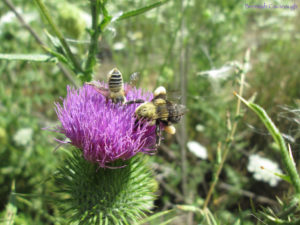
There are at least three different species of wild bees that nest within a few feet of my back door. Most people never notice that they’re there. Most wild bees are solitary, meaning that they don’t live in colonies. Instead, the female bees build nests and provision them with nectar and pollen and lay an egg or eggs in them. Two of the three outside my back door are solitary, but one is social, meaning that they do live in a colony and even they are very discreet.
Two-spotted bee (melissodes bimaculata)
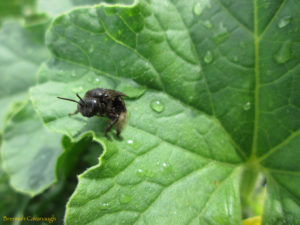
The first bees I noticed nesting outside the back door were two-spotted bees, or melissodes bimaculata, as I usually think of them. (I didn’t learn the common name when I first identified them, and I assumed they probably didn’t have one since most common names for bees don’t refer to a single species; they refer to a group of related species. A year or two later, I came across the common name.) These bees have been nesting in the vicinity of the back door since we moved here, which means they’ve probably been there longer than that. Two-spotted bees are solitary bees that nest in the ground and emerge late in the year (I have not even seen any of them yet this year). They usually start to appear at about the time our lemon balm starts to flower, and I frequently see them foraging on it. They are named for the two rectangular spots on the back of the abdomen of the females (bimaculata also means two spotted).
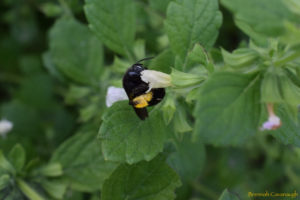
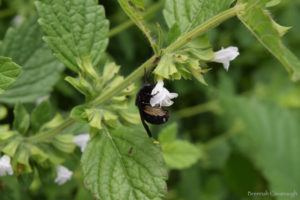
Leafcutter bee (megachile sp)
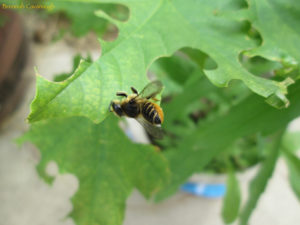
The next bees I noticed were the leafcutter bees. They are not nearly as consistent about nesting in the same spot every year, but there was at least one nest three years ago, and several nests this year that I’ve observed. They’ve certainly been around other years, but I wasn’t able to spot exactly where they were nesting. Leafcutter bees are also solitary, and they build their nests out of pieces of leaves that they collect. They roll the leaves up into a tube, and divide the tube into sections that each will contain one egg and its food provisions. I enjoy watching them forage since they and the other bees in their family are the only bees to store the pollen they’ve collected on the underside of their abdomen, often causing them to hold it up high so that the pollen they’ve collected doesn’t get brushed off.
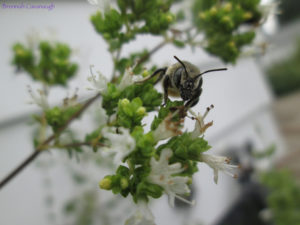
Bumble bee (bombus sp)
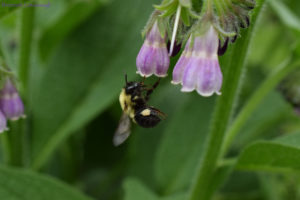
The third bees to make their nest right outside my door are the bumble bees. These are social bees, and there is one colony living at the edge of the lemon balm patch. They live underground and there is no obvious hole leading to their nest, so they are basically invisible… much like the other bees in this list. I think I was expecting them to be slightly more noticeable since they are social, and honey bees and yellow jackets (a social, sometimes ground nesting wasp) are both fairly noticeable. Both have a steady stream of traffic at their entrance and the yellow jackets do have a noticeable hole when they nest in the ground. But the bumble bees have one or two bees coming and going every few minutes and nothing to see to indicate they’re there otherwise.
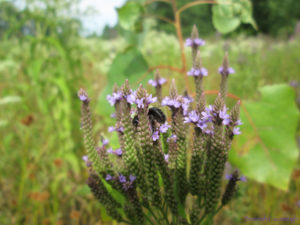
Bumble bees spend the warm months of the year living as a colony, and in the fall they raise a new batch of queens which hibernate over winter and start new colonies in the spring. The old queen and colonies don’t overwinter. Because of this, the colonies are in different locations each year.
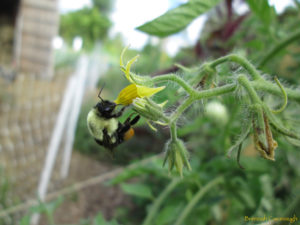
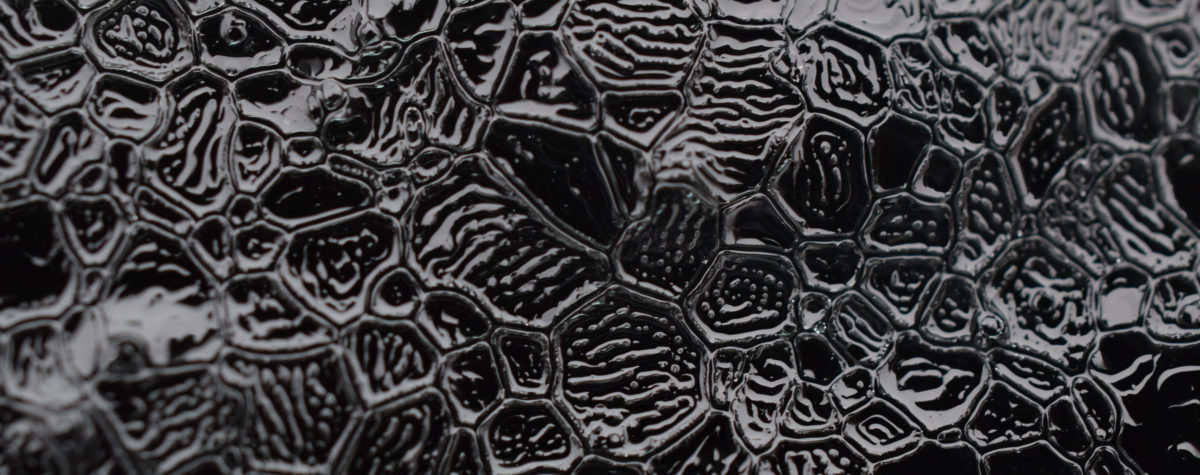
Brennah, I am so excited to to learn from you. Your pictures are amazing!
Fascinating! Thanks for this!